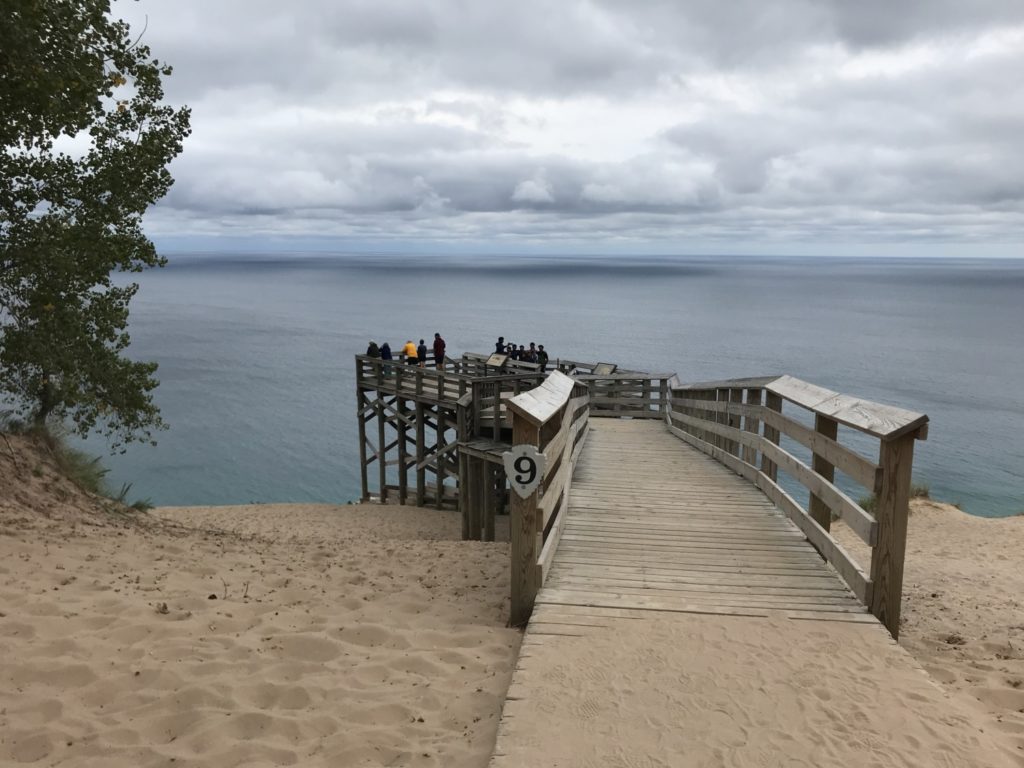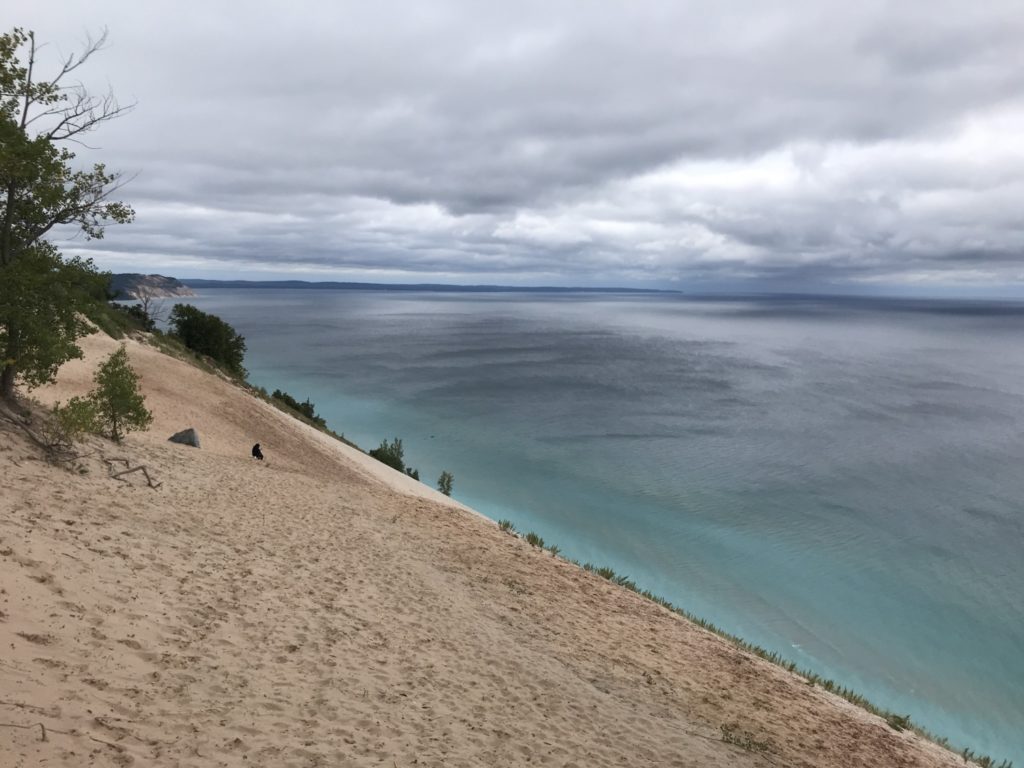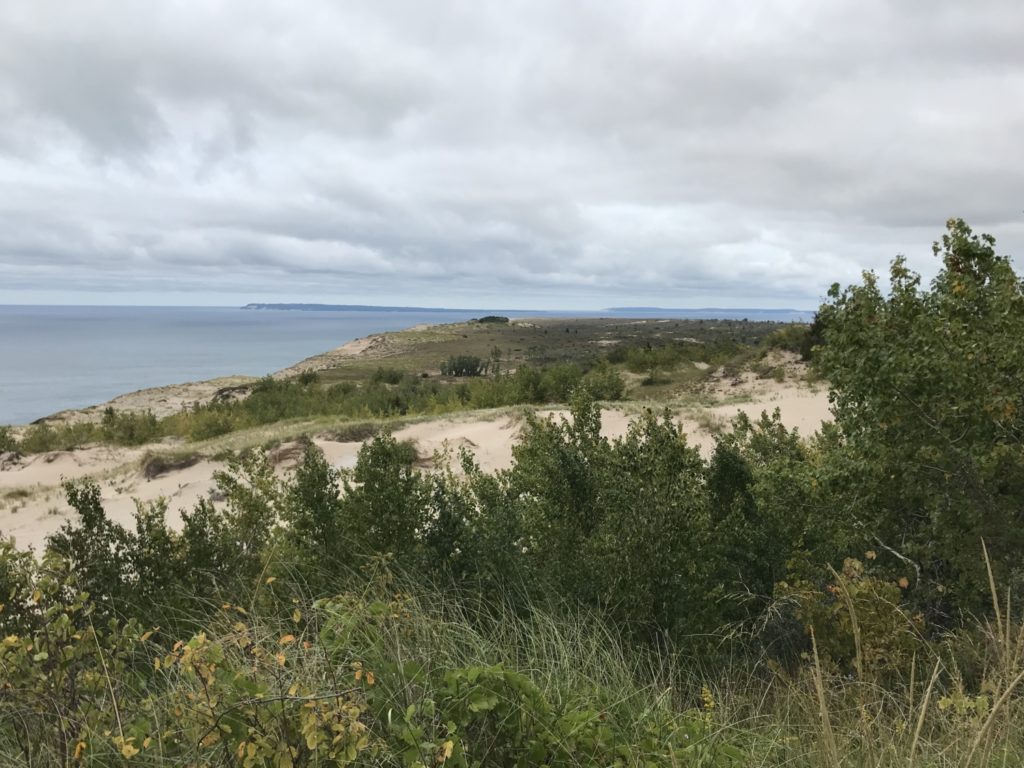Our final activity at Sleeping Bear Dunes National Lakeshore was traveling the Pierce Stocking Drive. I picked up a brochure at the Visitors Center that has a description of each of the stops on the drive. The brochure labels Pierce Stocking Drive as “America’s Most Beautiful Scenic Drive.” I’m not sure I agree with that hyperbole, but it was a lovely drive. The drive had been closed earlier in the day because of an Ironman Triathlon. All the people in the park who wanted to do the drive had to do it in the afternoon. Fortunately the drive is all one-way, and we never felt like we were battling traffic.
Pierce Stocking Drive is only 7.8 miles long, but because of the overlooks and hikes along the way it can take several hours to travel. The drive was named after Pierce Stocking, who spent his youth working as a lumberman in the northern Michigan forests. He loved the woods and spent his free time walking the bluffs above Lake Michigan. Because he loved the views so much, he developed a road to the top of the dunes to share the beauty with others. The road was opened to the public in 1967 and Stocking operated the Scenic Drive as a toll road until his death in 1976.
Today the road is part of Sleeping Bear Dunes National Lakeshore and the entry fee to the park covers the drive. There are 12 stops on the drive and each stop had a description in the brochure. We made sure that we saw the sights at each stop. We started with a covered bridge and then drove to the Glen Lake Overlook. Glen Lake is one of 20 inland lakes within the boundaries of Sleeping Bear Dunes.
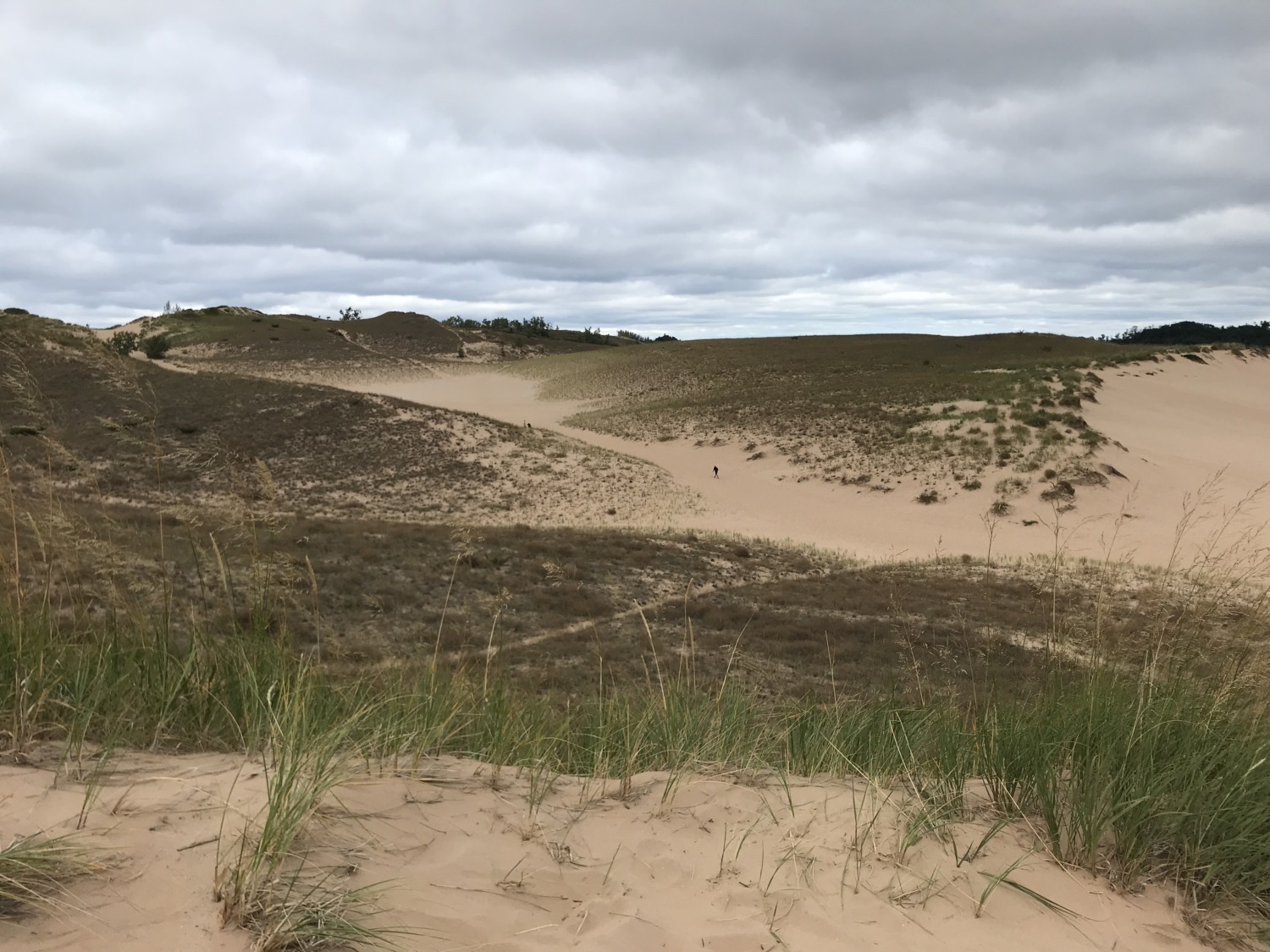
There were several stops at Dune Overlooks and trailheads. At one of the stops, we saw the Dune Climb we had done earlier. Another trail is the Cottonwood Trail which follows the top of the sand dunes. It is considered an easier trail because you don’t have to climb the dunes to get to this trailhead. The dunes at Sleeping Bear Dunes vary in their stability. The ones that are all sand can move a few feet per year. Others, with vegetation stabilizing them, are more stationary. Various dune grasses are the first step in stabilizing the dunes, and then juniper and cottonwood move in. Their deep roots help keep the dune in one place. The active dune zone at Sleeping Bear Dunes extends about a mile inland. After that the wind loses its power to move the sand and build dunes.

Maple and Beech forest dominates the landscape outside the dune zone. In addition to sugar maple and American beech, we saw black cherry, hemlock, and basswood trees. When there was a lot of logging in the area, they often planted pine trees to replace the trees that had been taken out. This changed the ecosystem of the forest. Today the National Park Service is trying to eliminate these “pine plantations.”

The most spectacular overlook on the Pierce Stocking Drive was the Lake Michigan Overlook. The brochure says “STOP THE CAR! You don’t want to miss this!” Of course we stopped the car and headed to the overlook. There are signs all over trying to discourage people from heading down the dune to the lake, but there were people doing exactly that. We could see them all the way at the bottom of the bluff and watched some of them trying to climb back up. Going down a sand dune is easy compared to climbing back to the top.
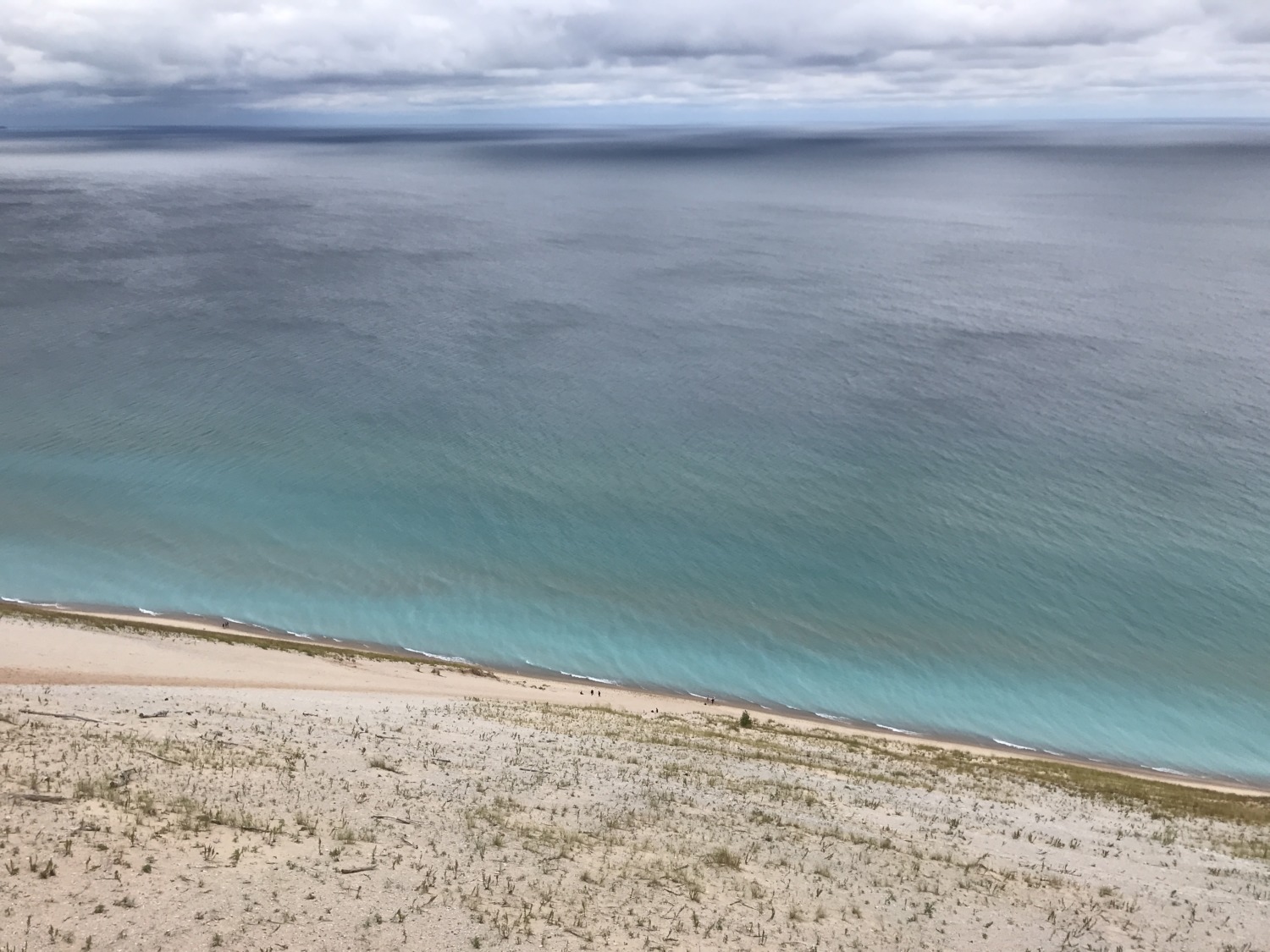
The observation deck built at the top of the dune sticks out over the dune. The lakeshore is 450 feet below. There were several large groups of people on the observation deck that were hogging all the rail space taking selfie after selfie. One group was having a birthday party on the deck complete with birthday cake. Instead of fighting for rail space, we took the short hike to the Sleeping Bear Dune overlook.
Sleeping Bear Dune is a perched dune because it perched on top of a plateau, high above the lake. Wind carried sand from the upper portion of the bluff and deposited it to form the dune. Over time, the bluff eroded and now the dune sits on the edge of the bluff. Sleeping Bear Dune is also eroding away. In the early 1900’s the dune was 234 feet tall but by 1961 it was only 132 feet tall. Eventually the dune from which the park gets its name will be gone. When we came back from this short walk, the observation deck was completely deserted so we took a turn hogging the rail space for ourselves.
Pierce Stocking Drive is a beautiful, scenic drive that introduces people to all the ecosystems of the park. We enjoyed driving it and seeing the sights. As the last thing we did in the park, it was a good way to summarize what we saw and learned during the day.

